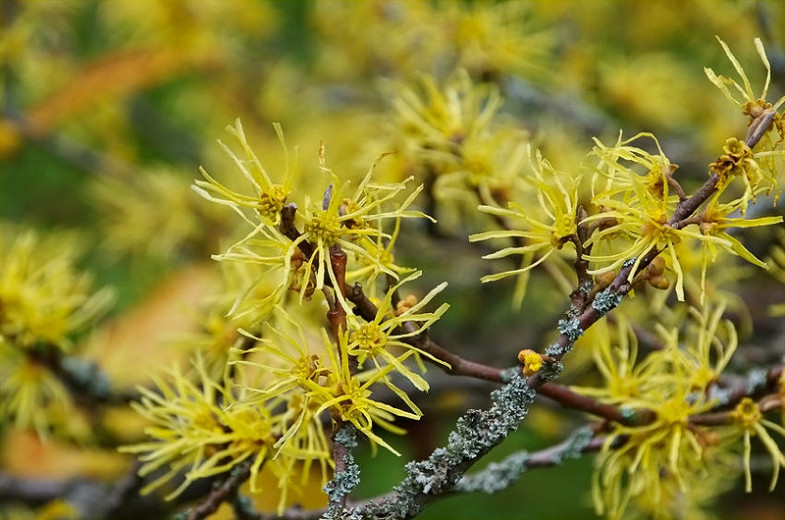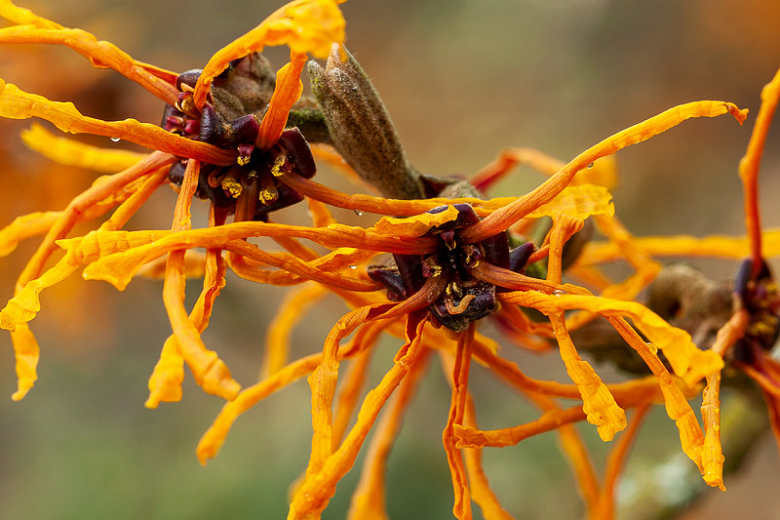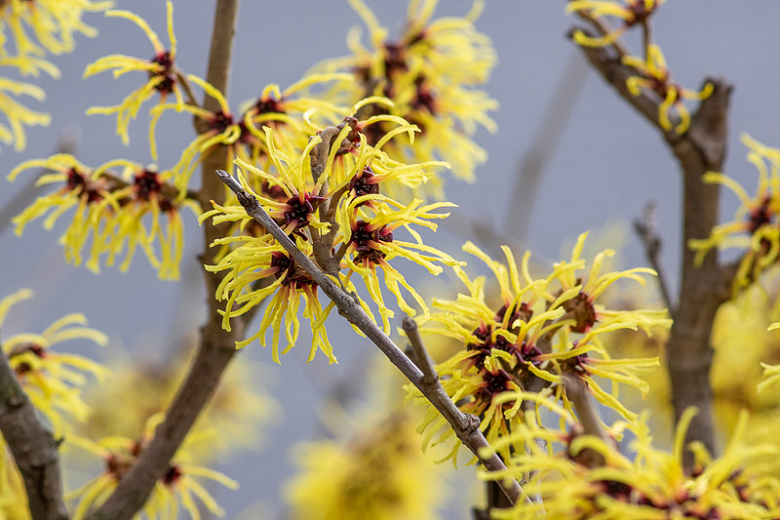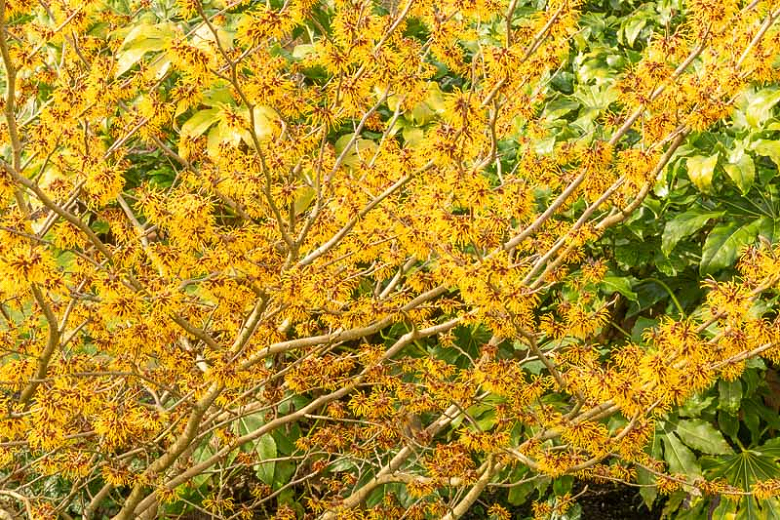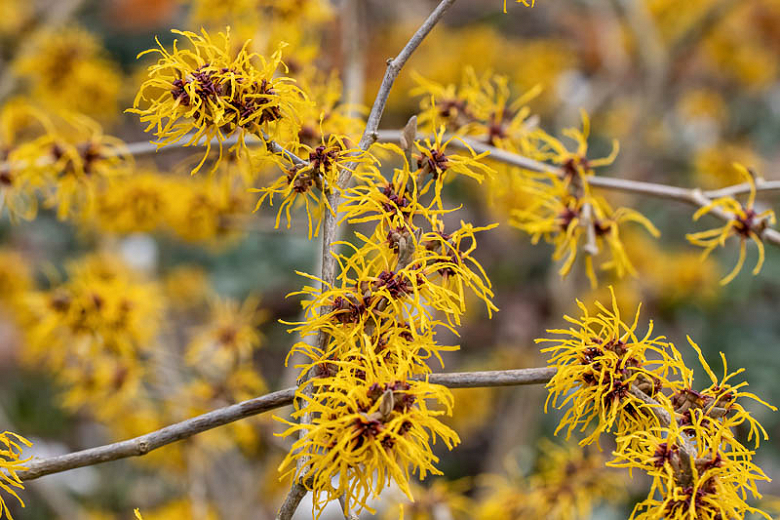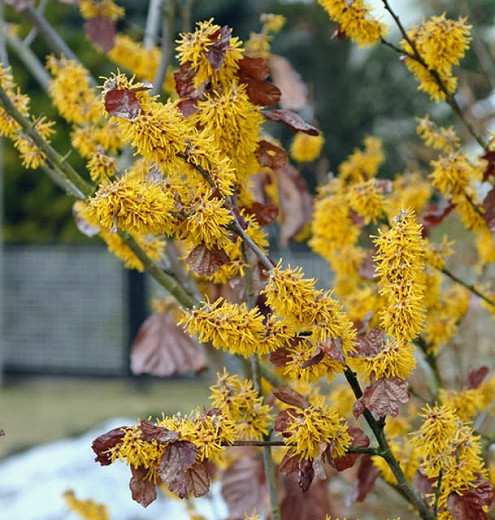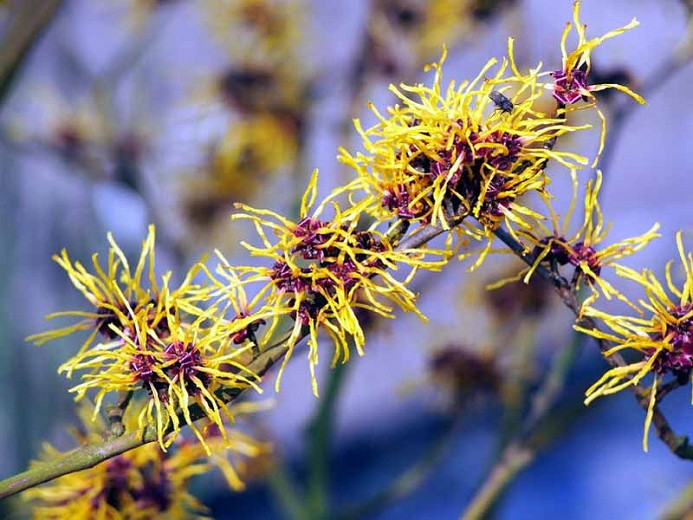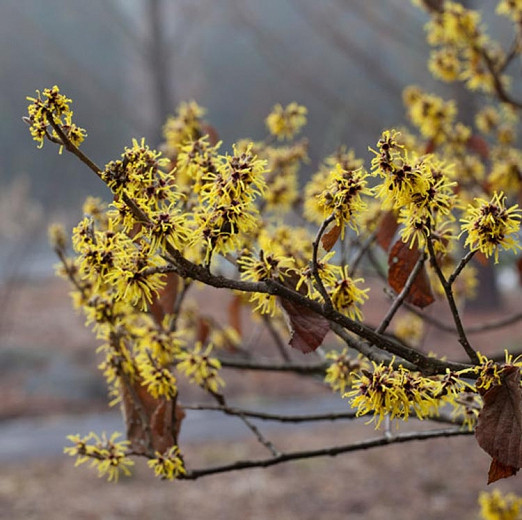Hamamelis virginiana (Virginian Witch Hazel)
Noted for its fantastic fall attributes, Hamamelis virginiana (Virginian Witch Hazel) is an erect large, deciduous shrub or small tree, with sweetly-scented, pale yellow flowers in fall and early winter. Each flower consists of 4 golden ribbon-like, slightly-twisted, crinkled petals. Clustered along the arching branches, the flowers emerge when you least expect them and may linger on the branches into December. This Witch Hazel sports smooth, broadly oval leaves, which open light green before turning dark green. They turn brilliant golden yellow shades in the fall. Smooth gray bark, handsome architecture, colorful fall foliage, and floral splendor make Hamamelis virginiana a great addition to the landscape. Virginian Witch Hazel is the species from which medicinal witch-hazel extract is made.
- Grows up to 15-20 ft. tall and wide (450-600 cm).
- A full sun to full shade lover, this plant is best grown in average, medium moisture, well-drained soils. Prefers organically rich, moist, acidic soils. Tolerates heavy clay soils. Adaptable to home landscaping situations, Virginian Witch Hazel is naturally found along stream banks in the shade in its native range where it appears open and poorly branched. However, under cultivation in full or partial sun, it develops a fuller, rounded crown.
- Perfect in mixed shrub borders for dramatic late-season blooms. Great flowering shrub for cottage gardens, rain gardens, woodland gardens, banks and slopes, screens, and hedges. Perfect as a specimen plant.
- Low maintenance, this plant may be damaged by rabbits and deer. Keep an eye out for honey fungus, phytophthora root rot, coral spot, and powdery mildews.
- Promptly remove any suckers to prevent spread.
- No regular pruning is required. Simply remove any dead, damaged, or weak shoots. Prune in spring after flowering if you need to control shape and size.
- Propagate by seed, sown in containers in a cold frame as soon as they are ripe, or by layering in fall
- Native to eastern Canada, Midwest & East United States, Mexico
Requirements
| Hardiness | 3 – 8 |
|---|---|
| Heat Zones | 1 – 8 |
| Climate Zones | 1A, 1B, 2A, 2B, 3A, 3B, 4, 5, 6, 7, 8, 9, 14, 15, 16, 18, 19, 20, 21 |
| Plant Type | Shrubs, Trees |
| Plant Family | Hamamelis – Witch Hazels |
| Exposure | Full Sun, Partial Sun, Shade |
| Season of Interest | FallWinter |
| Height | 15' – 20' (4.5m – 6m) |
| Spread | 15' – 20' (4.5m – 6m) |
| Water Needs | Average |
| Maintenance | Low |
| Soil Type | Clay, Loam, Sand |
| Soil pH | Acid, Neutral |
| Soil Drainage | Moist but Well-Drained |
| Characteristics | Fragrant, Showy |
| Native Plants | United States, Midwest, Illinois, Indiana, Iowa, Michigan, Minnesota, Missouri, Ohio, Wisconsin, Northeast, Connecticut, Delaware, Maine, Massachusetts, Maryland, New Hampshire, New Jersey, New York, Pennsylvania, Rhode Island, Vermont, Southeast, Alabama, Arkansas, Florida, Georgia, Kentucky, Louisiana, Mississippi, North Carolina, South Carolina, Tennessee, Virginia, West Virginia, Southwest, Oklahoma, Texas |
| Tolerance | Clay Soil |
| Attracts | Birds |
| Garden Uses | Banks and Slopes, Beds and Borders, Hedges and Screens |
| Garden Styles | Informal and Cottage, Prairie and Meadow, Traditional Garden |
